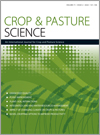CP19308Nitrogen supply in combination of nitrate and ammonium enhances harnessing of elevated atmospheric CO2 through improved nitrogen and carbon metabolism in wheat (Triticum aestivum)
Elevated atmospheric CO2 levels are said to increase productivity of future crops, but do we know whether this response is dependent on the form of nitrogen (N) available to plants? In wheat, we showed that a simultaneous supply of NO3– and NH4+ is required to maximise harnessing of elevated atmospheric CO2 compared with sole NO3–, NH4+ or urea applications. Our findings can help to maximise crop productivity while sustaining nutritional quality of the produce (e.g. grain protein concentration) in future environments with higher atmospheric CO2 concentrations.





